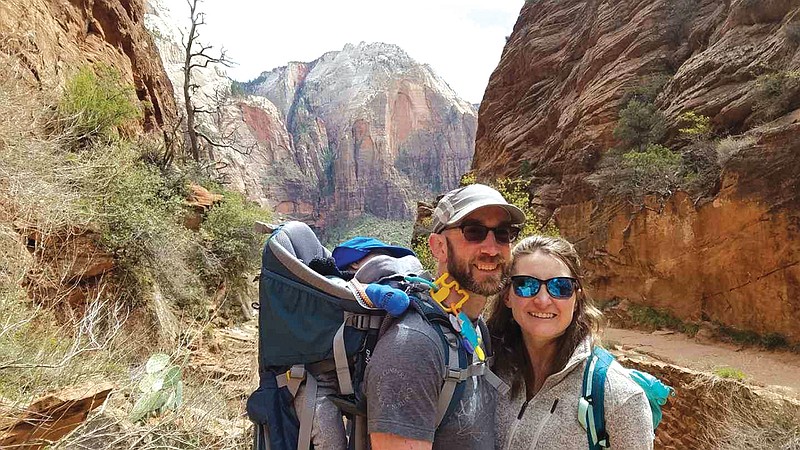Years ago, my husband joined me in Las Vegas while I was there for a conference, and in between sessions, we decided to head out to Red Rocks Canyon for a short hike. I specifically picked Ice Box Canyon because the name implied that even in the 104-degree temps, we might be able to find some respite from the heat.
From what I remember, we made it no more than half a mile from the car when my dear sweet man was not looking too well off. We stopped near a bush and tried to find some shade - all the while, I was admittedly not being the supportive wife and instead began badgering him about how we were hardly anywhere close to the destination.
By the time we'd gotten back to the car, he was as red as the walls of the canyon, and speaking very little (although doing a great job of giving me side-eye each time I mentioned 'a dry heat').
After several minutes in the car with the A/C on blast, he finally began pouring sweat. What I came to realize was that 100-plus degree temperatures, too little water, and very likely a bit too much imbibing the night before (it was Vegas, after all) made for a nasty combination which led him to heat exhaustion.
Heat illness, a catchall term that can umbrella dehydration, heat exhaustion and heat stroke, is defined as disorders related to environmental exposure to heat. Heat exhaustion refers to the more minor symptoms that can occur as a result of difficulty managing heat exposure.
Heat stroke can occur as a result of the environment, exertion, or more commonly, as some combination of the two. Confusion, sometimes referred to as altered mental status, is the trademark symptom that delineates heat stroke from heat exhaustion.
As we get into the hottest season here in Chattanooga, whether you're getting out on the water to paddle, running a few extra training miles while prepping for the Stump Jump 50k, or putting in the work biking up High Voltage up at Raccoon Mountain, be sure to keep your body prepared for the heat.
Prevention Tips
*Let your workout be dictated by effort — not your pace!*Consume liquids equal to 1/2 your bodyweight in ounces, 2/3 of which should be water.A 150-pound person would drink 75 fluid ounces per day with 50 of those ounces being water.*On hot days, add carbohydrate- and electrolyte-containing fluids — 1 gram of carbs per ounce of water.*Salty snacks can be helpful to maintain sodium levels.*Monitor your urine output for both darkened color and decreased quantity. Urine should generally be the color of straw.*Avoid exertion during the hottest parts of the day.*Wear well-ventilated synthetic clothing and cover your head. Wear sunglasses.
